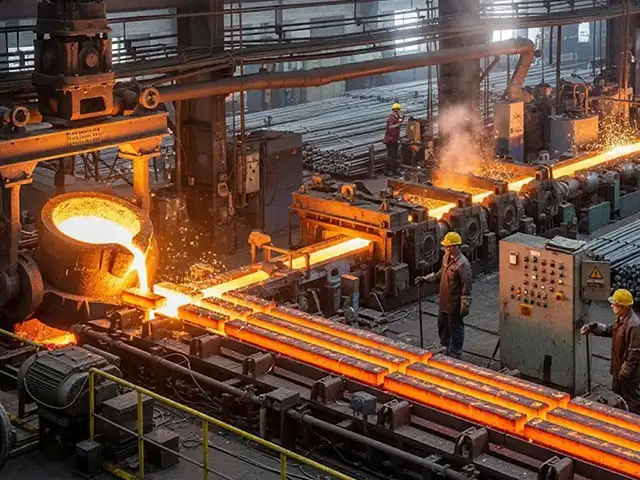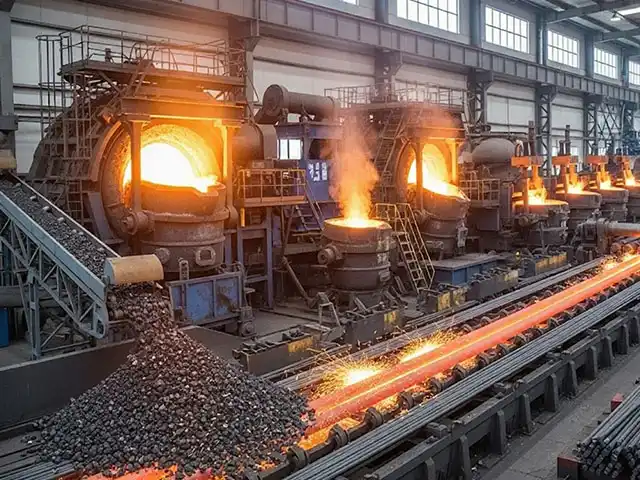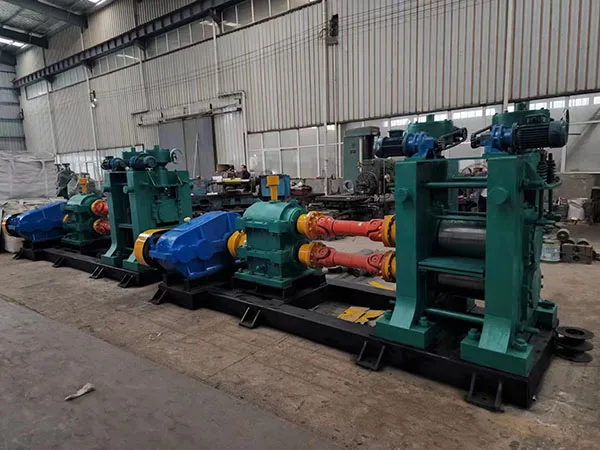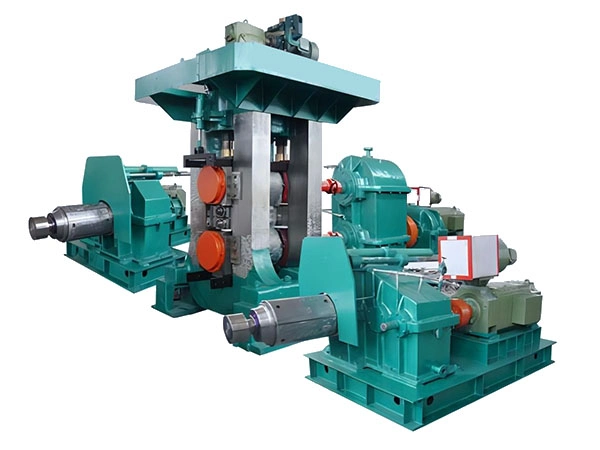Rebar Production Line Configuration
A reinforcing steel production line is an integrated industrial system designed to manufacture steel bars, commonly known as rebar, used for reinforcement in concrete structures. This line typically involves a series of processes including rolling, cutting, bending, and sometimes welding, to produce rebar that meets specific dimensional and strength
Advanced technology and processes
At gyssljx, our production lines are engineered with state-of-the-art technology to ensure high efficiency, precision, and consistency. The system starts with raw steel billets, which are heated and rolled into the desired shape and size.

Customizable
Then, advanced cutting and bending machines tailor the rebar for various construction applications. Our lines are customizable to handle different steel grades, diameters, and production volumes, making them suitable for projects ranging from residential buildings to large infrastructure developments.
Quality Control
With a focus on automation and quality control, gyssljx's production lines minimize human error and maximize output, providing reliable solutions for the global construction industry.

Production Process · Production Process ·
Scrap Metal Sorting and Pre-treatment: If using scrap, it's sorted to remove impurities and pre-treated (e.g., cut into smaller pieces, baled) to optimize melting.
Iron Ore and Coking Coal: For integrated steel mills, iron ore is reduced in a blast furnace using coking coal to produce molten pig iron.
Electric Arc Furnace (EAF): Scrap metal, or a mix of scrap and direct reduced iron (DRI), is melted in an EAF. Electrodes generate an arc that melts the charge.
Basic Oxygen Furnace (BOF): Molten pig iron from a blast furnace is refined in a BOF, where oxygen is blown through the melt to remove impurities like carbon and silicon.
Ladle Metallurgy: After the primary melting, the molten steel is transferred to a ladle for further refining. This step allows for precise control of chemical composition by adding alloys and removing unwanted elements (e.g., desulfurization, deoxidation).
Tundish: Molten steel flows from the ladle into a tundish, which acts as a buffer and distributes the steel evenly into the molds.
Molds: The steel then flows into water-cooled copper molds. The outer shell of the steel solidifies as it passes through the mold.
Secondary Cooling: Below the molds, water sprays cool the partially solidified strand further.
Straightening and Cutting: The solidified strand, often in square or rectangular sections (billets or blooms), is then straightened and cut to desired lengths.
Reheating Furnace: The billets or blooms are reheated to a high temperature (around 1100-1200°C) to make them malleable for rolling.
Roughing Stands: The hot billets pass through a series of roughing stands, which progressively reduce their cross-section and increase their length.
Intermediate Stands: Further reduction and shaping occur in intermediate rolling stands.
Finishing Stands: In the final finishing stands, the desired rebar diameter and deformation pattern (ribs or indentations) are achieved. These deformations are crucial for improving bond strength with concrete.
Quenching and Self-Tempering (QST) / Thermex Process: This is a common technology for producing high-strength rebar. Immediately after the last rolling stand, the hot rebar is rapidly cooled with water (quenching) to harden the outer surface. The core remains hot, and as heat transfers from the core to the surface, the surface self-tempers, resulting in a desirable microstructure with a tough core and a strong, hard outer layer.
Cooling Bed: After rolling and the QST process (if applied), the rebar is transported onto a cooling bed, where it cools down uniformly.
Shearing: Once cooled, the rebar is sheared to the final specified lengths.
Bundling and Tagging: The finished rebar is then bundled, weighed, and tagged for identification before being sent to storage or dispatch.

A Complete Analysis of the Cold Rolling Process: From Raw Materials to High-precision Finished Coils
Read more
Cold Rolling Mill Working Principle Explained: A Complete Beginner’s Guide
Read more
Cold Rolling Mill Price Guide 2025: Key Cost Factors Every Buyer Should Know
Read more
Steel Bar Production Line vs Traditional Processing: Maximize Efficiency, Quality & Profitability
Read moreIf you have any product related questions, please feel free to call us at any time

With 30 years of professional experience, we customize efficient and energy-saving rolling mill production lines, providing you with one-stop service from design to installation and commissioning, helping you achieve steady growth in the steel industry.
Go
Top
SHENLONG Machinery · Your Rolling Equipment Expert ·